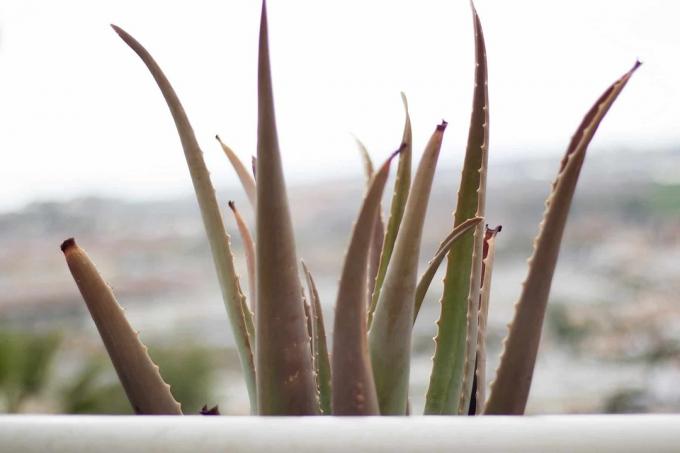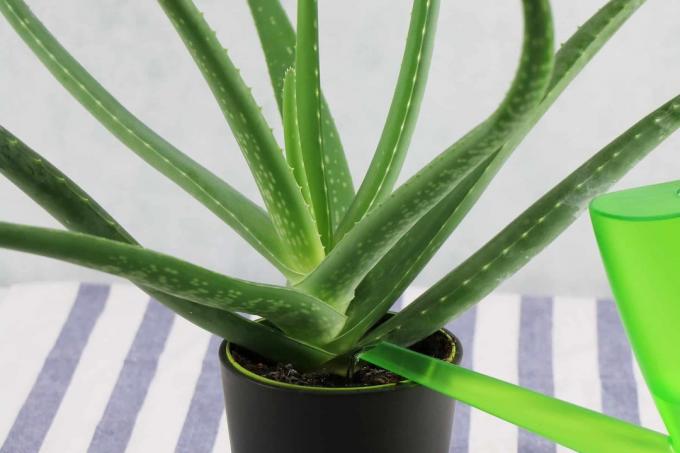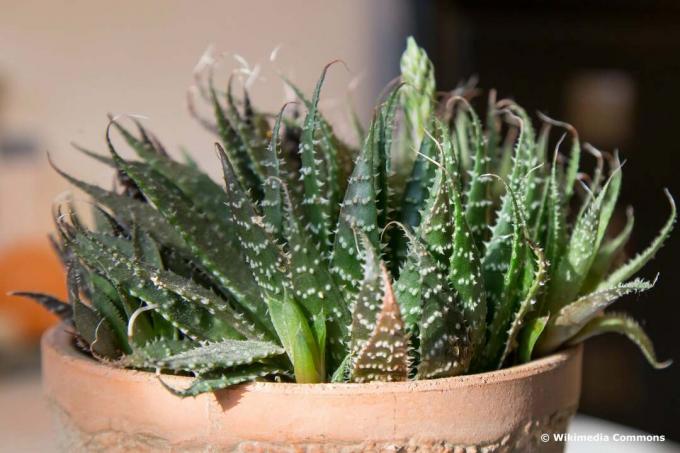
The healing effect of aloe vera has been known for generations. It has long since made a name for itself as a decorative plant decoration for the balcony, terrace and garden. But how hardy is aloe vera actually?
In a nutshell
- heat-loving desert plant
- comes from tropical and subtropical areas
- not hardy
- sheltered winter quarters required for potted plants
- brown discoloration is a sign of frostbite
Table of Contents
- aloe vera
- Overwintering aloe vera
- Frost tolerant aloe varieties
- frequently asked Questions
aloe vera
The aloe vera is a wonderful container plant for those who have little time to spend on their plants. The to the succulents counting species can store water in the thick leaves and survive even long periods of drought. No wonder, after all it comes from warm desert regions. If you cultivate your aloe vera outdoors, you should the sunniest place to assign. She can't stand shadows.

The medicinal plant is known by various names:
- 'Real aloe', because 'vera' stands for genuine or true
- 'Desert Lily' after her homeland
- 'Bitterschopf', because 'aloe' means bitter in translation
Overwintering aloe vera
Most varieties of aloe vera– more than 250 are known – are not hardy in Germany. They do not tolerate frost and even temperatures in the low double-digit range cause them problems.
Instructions

- Bring the aloe vera cultivated in the tub indoors as soon as the temperatures in autumn fall below 10 degrees Celsius. Late September is a good time to move.
- Choose a bright, frost-free place in the house. The winter temperature should be at least 10 degrees Celsius.
- Check the plant regularly for mealybugs, scale insects or other pests in the winter quarters.
- At the beginning of June, when it gets warm, the aloe vera can go outside again. First place them in partial shade so that the leaves can slowly get used to the sun.
A notice: In the winter quarters, the aloe vera is only poured a little if the substrate is very dry. It is not fertilized during the dormant period.
Frost tolerant aloe varieties
A few cultivars of aloe, native to the mountainous regions of African countries, have developed frost tolerance.
the Aloe aristata, the "awn aloe", and the Aloe polyphylla, the "Spiral-Aloe", are considered in Germany as conditionally hardy. In regions with a mild climate, they can hibernate outside. However, they also need good winter protection there.

Source: Maya Dumat from Germany (Germany), Aloe aristata with inflorescence (42562591112), Edited from Plantopedia, CC BY 2.0
A notice: The aloe aristata is a beautiful plant that produces yellow flowers after a few years. Note that they toxic to cats is!
frequently asked Questions
While young leaves appear in the middle of the rosettes, the lower ones gradually turn brown and dry up. It is not absolutely necessary to remove the dry parts of the plant. However, if you value the attractive appearance of the aloe, you should regularly cut off the dry parts with a sharp knife.
The aloe vera flowers only after two to three years. Overwintering in a cool, but frost-free and bright room is crucial for flowering.
After three to four years you can use the leaves of aloe vera. They are cut off with a sharp knife, washed and placed vertically in a jar. After about an hour, the juice will have run out and you can drink the healing juice of aloe vera. Attention, this only applies to aloe vera, the real aloe. Many other types of aloe are poisonous!
No, if you have the opportunity, you should take them outside in the summer. The plant benefits from the sun.
